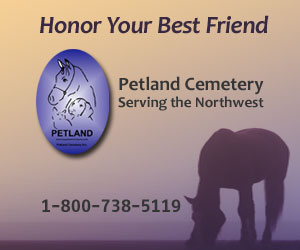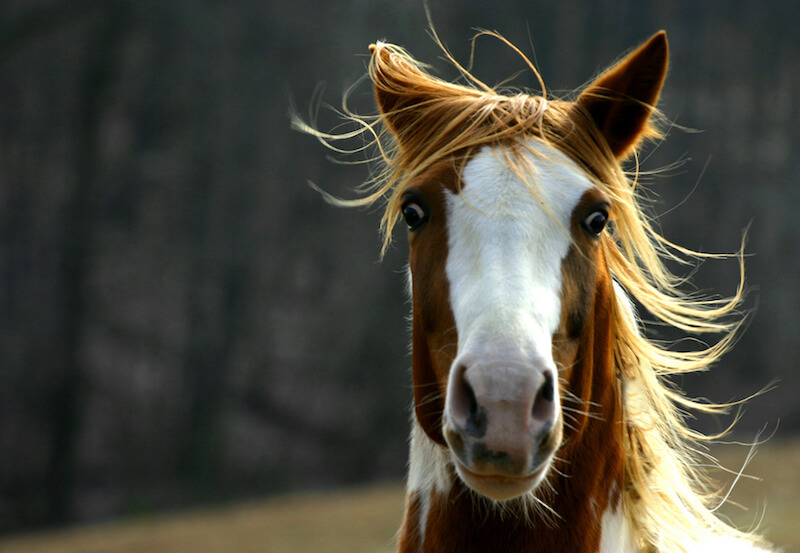Understanding Your Horse’s Reactions
by Barbara Breckenfeld, LAMP
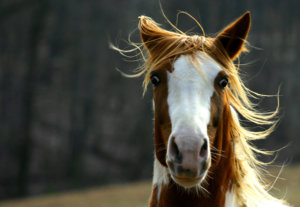
We’ve all experienced a horse spooking at something. It’s their fight/flight/freeze response—a physical reflex of the autonomic nervous system. Understanding this system helps us to work with horses’ physiology.
First, let’s define our terms. The autonomic nervous system controls automatic responses and involuntary functions of the body. It’s composed of two parts: the sympathetic and the parasympathetic nervous systems.
The sympathetic nervous system (SNS), or fight/flight/freeze, is the state of high alert. It raises awareness of the senses, increases blood flow and breathing, diverts blood to the muscles, and suppresses digestion. It also increases sweating and heartbeat, dilates pupils, and inhibits body functions such as salivation or urination. It’s “all hands on deck” preparing the horse to escape danger.
Behaviors characterizing the SNS: high, rigid head and neck; back drops; stops eating; holds breath; stiff, unresponsive limbs.
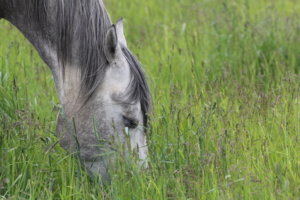
The parasympathetic nervous system (PNS), or rest/digest, operates when the horse feels safe and relaxed. PNS slows the heartbeat, increases salivation, allows urination, increases circulation to intestines and liver, and movement through the digestive tract.
When a horse is in PNS he appears relaxed, with gut sounds, sighing and blowing, slower breathing, yawning, and just being.
We can encourage horses to return to PNS by feeding hay when they are tense, as in trailering.
Eating activates the PNS. Exhaling, slowing our movement, and pausing helps. Our voices can make soothing sounds — “Eeeeassyyyy” or “Whoaaaaa.” Consider laughing and smiling. Bodywork and calming touch release endorphins, enhancing relaxation.
It’s Physiology
Horses, as prey, evolved to run from danger. Though little danger exists for domestic horses today, they are hard-wired this way.
Horses have different forebrains than humans—the part that thinks and plans. With smaller frontal lobes, horses aren’t able to plan or premeditate actions. They respond from instinct, not vicious intent.
Horses with different temperaments react differently to perceived danger. One horse may bolt, another will just step away. Horses respond to fear by backing away, lunging sideways, or in extreme cases, bucking, rearing, kicking, or biting.
Applying Our Understanding
Mammals aren’t meant to stay in SNS or PNS all the time. Both parts have a purpose; one is not bad or good. The body’s stress response is designed to get us through brief, intense times of life-threatening risk.
But often SNS is subtler than high alert. When I stand by a horse before bodywork, they often release before I touch them. With new input, they bump a bit into SNS. Once they check me out and decide I’m okay, their release signals a return to PNS.
In life, stress happens and is not all bad. But a high (or constant) level of fear and stress block our awareness and learning. Remember being so frightened you couldn’t think straight? Our physical experience changes as our bodies prepare for danger.
Learning and healing happen when the body is in PNS (not SNS), yet our methods of training, riding, handling, veterinary treatment, and horse keeping often overlook this. If we handle horses to encourage their PNS and allow our horses time to return to PNS after something stressful, we all benefit.
Over-pressuring the horse, loud and aggressive tones, impatience, and rough handling all stimulate SNS behaviors of fight/flight/freeze and inhibit learning. More highly-strung horses need more patience and understanding to train but can make great competitive partners because their bodies respond by releasing more adrenalin. If competing stresses you, imagine what your horse feels. They mirror our stress/excitement. We’ve all seen this happen for better and for worse.
Understanding the autonomic nervous system has practical applications and benefits in handling and training horses. We can elicit desired behaviors and encourage parasympathetic responses with a calm environment, patience and gentle handling, reassuring tones of voice.
It’s Also a Human Thing
Human nervous systems work very much like horses. Becoming aware of whether we are in SNS or PNS allows us to learn how to return to PNS on purpose. What a great skill!
Good and effective horse people understand and work with the autonomic nervous system. Understanding SNS and PNS gives us more ways to work with our horses, each other, and ourselves, using clarity and kindness based in compassionate understanding of how our horses and our own bodies are wired.
 Barbara Breckenfeld of Movement in Balance does equine bodywork/massage and healing in the greater Puget Sound area, as well as offering her popular “Bodywork for Horses” clinics. She is nationally certified by NBCAAM, licensed as a LAMP in Washington State, and an Equine Structural Integration Practitioner certified by the Equine Natural Movement School. Barbara became a horsewoman in 1993 when a handsome dapple-gray won her heart and introduced her to the fundamentals of dressage. Contact Barbara by email [email protected], call 425-260-0784, or visit www.movementinbalance.com.
Barbara Breckenfeld of Movement in Balance does equine bodywork/massage and healing in the greater Puget Sound area, as well as offering her popular “Bodywork for Horses” clinics. She is nationally certified by NBCAAM, licensed as a LAMP in Washington State, and an Equine Structural Integration Practitioner certified by the Equine Natural Movement School. Barbara became a horsewoman in 1993 when a handsome dapple-gray won her heart and introduced her to the fundamentals of dressage. Contact Barbara by email [email protected], call 425-260-0784, or visit www.movementinbalance.com.
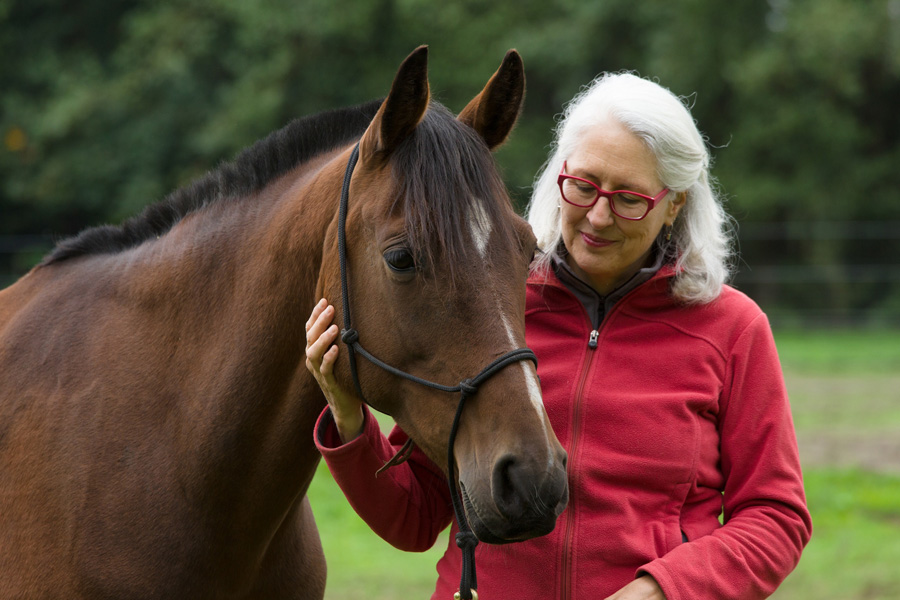
Barbara Breckenfeld of Movement in Balance does equine bodywork/massage and healing in the greater Puget Sound area, as well as offering her popular “Bodywork for Horses” clinics. She is nationally certified by NBCAAM, licensed as a Large Animal Massage Practitioner (LAMP) in Washington State, and an Equine Structural Integration Practitioner certified by the Equine Natural Movement School. Barbara became a horsewoman in 1993 when a handsome dapple-gray won her heart and introduced her to the fundamentals of dressage. Contact Barbara by email [email protected], call 425-260-0784, or visitwww.movementinbalance.com.



